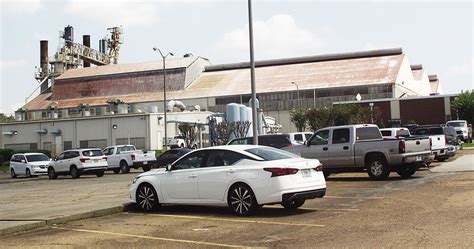
A man attending a court hearing in Massachusetts was mistakenly arrested by Immigration and Customs Enforcement (ICE) agents who confused him with someone else fitting a similar description, prompting condemnation from local officials and raising concerns about ICE’s practices.
BOSTON — A Massachusetts man was wrongly arrested by U.S. Immigration and Customs Enforcement (ICE) agents at the Edward W. Brooke Courthouse last week after being mistaken for another individual with a similar general description. The incident, which occurred on Wednesday, June 5, 2024, has sparked outrage from local politicians and civil rights advocates, who are demanding answers and calling for greater accountability from the federal agency.
According to sources, the man, whose identity has not been publicly released, was at the courthouse to support a family member in a legal proceeding. While waiting, he was approached by ICE agents who allegedly believed he matched the description of someone they were seeking to detain. Despite the man’s protests and attempts to clarify the misunderstanding, he was taken into custody.
“He was arrested despite informing officers that they had the wrong person,” stated a press release from a coalition of local advocacy groups. “It wasn’t until hours later, after his family and legal representatives intervened, that ICE acknowledged their error and released him.”
The mix-up has drawn sharp criticism from Massachusetts elected officials. Senator Elizabeth Warren released a statement condemning the incident, calling it “unacceptable” and “a clear violation of this individual’s rights.” She added, “ICE needs to provide a full explanation of how this happened and what steps they are taking to prevent similar errors in the future.”
Representative Ayanna Pressley echoed Warren’s sentiments, describing the arrest as “deeply troubling” and “a stark reminder of the potential for abuse within our immigration enforcement system.” She emphasized the chilling effect such incidents can have on communities, making individuals fearful of engaging with the legal system.
ICE has acknowledged the error, stating that the man was “misidentified” and released after the mistake was discovered. In a brief statement, the agency said, “ICE takes seriously all allegations of misconduct and is committed to ensuring that its enforcement actions are conducted in a manner that respects the rights of all individuals.” However, the agency did not provide details on the specific circumstances that led to the wrongful arrest or the measures being taken to prevent future errors.
The incident has reignited the debate over ICE’s tactics and the potential for civil rights violations in immigration enforcement. Critics argue that the agency’s reliance on broad descriptions and flawed intelligence can lead to wrongful detentions, particularly targeting individuals based on their race or ethnicity.
Carol Rose, executive director of the ACLU of Massachusetts, called the incident “a disturbing example of ICE’s disregard for due process.” She added, “This is not an isolated incident. We have seen a pattern of ICE agents overstepping their authority and violating the rights of individuals, often with little or no accountability.”
The ACLU and other advocacy groups are calling for a thorough investigation into the arrest and demanding greater transparency from ICE regarding its enforcement policies and procedures. They are also urging Congress to pass legislation that would provide greater oversight of ICE and protect individuals from wrongful detention.
This incident also highlights the ongoing tension between federal immigration enforcement and state and local authorities in Massachusetts. The state has adopted several policies aimed at limiting cooperation with ICE, including restrictions on the use of state resources for immigration enforcement and sanctuary city policies in some municipalities.
The Boston City Council is expected to hold a hearing on the matter next week, where ICE officials will be invited to testify and answer questions about the arrest and the agency’s practices in Massachusetts.
“We need to get to the bottom of this,” said City Councilor Ricardo Arroyo, who chairs the council’s Public Safety and Criminal Justice Committee. “This is not just about one individual. It’s about the integrity of our justice system and the safety of our community.”
The wrongly arrested man is reportedly considering legal action against ICE, alleging false imprisonment and violation of his civil rights. His attorney stated that they are “exploring all legal options” and intend to hold ICE accountable for its actions.
The incident at the Edward W. Brooke Courthouse serves as a stark reminder of the potential consequences of flawed immigration enforcement and the importance of protecting individual rights in the face of government overreach. As the debate over immigration policy continues to intensify, incidents like this one are likely to fuel further scrutiny of ICE’s practices and calls for greater accountability.
Further Details and Context:
The Edward W. Brooke Courthouse, where the incident occurred, is a busy judicial center located in downtown Boston. It houses several state courts, including the Boston Municipal Court and the Suffolk County Juvenile Court. The courthouse is a public space where individuals from all walks of life come to seek justice, support loved ones, or conduct legal business. The presence of ICE agents in such a setting has raised concerns about the potential for intimidation and the chilling effect on access to justice.
ICE’s Enforcement Priorities:
ICE’s enforcement priorities have shifted over time, depending on the administration in power. Under the Trump administration, ICE adopted a more aggressive approach to immigration enforcement, targeting a broader range of individuals, including those with no criminal record. The Biden administration has issued new guidance that prioritizes the apprehension and removal of individuals who pose a threat to national security, public safety, or border security.
However, critics argue that even with the new guidance, ICE’s enforcement practices remain problematic. They point to incidents like the wrongful arrest in Boston as evidence that the agency is still prone to errors and that its actions can have devastating consequences for individuals and families.
The Role of Technology in Immigration Enforcement:
Technology plays an increasingly important role in immigration enforcement. ICE uses a variety of tools, including facial recognition software, data analytics, and social media monitoring, to identify and track individuals. While these technologies can be effective in identifying criminals and security threats, they also raise concerns about privacy and potential for bias.
Facial recognition technology, in particular, has been criticized for its inaccuracy, particularly when used to identify people of color. Studies have shown that facial recognition systems are more likely to misidentify individuals from certain racial and ethnic groups, leading to wrongful arrests and other injustices.
The Impact on Communities:
Immigration enforcement policies have a significant impact on communities, particularly those with large immigrant populations. Aggressive enforcement tactics can create fear and distrust, making individuals reluctant to cooperate with law enforcement or seek medical care.
The wrongful arrest in Boston is likely to further erode trust between ICE and the community. It sends a message that anyone can be targeted, regardless of their legal status or ties to the community.
Legal and Constitutional Issues:
The incident raises several legal and constitutional issues, including the right to due process, the right to be free from unreasonable searches and seizures, and the right to equal protection under the law.
The Fourth Amendment to the U.S. Constitution protects individuals from unreasonable searches and seizures. This means that law enforcement officers must have a warrant based on probable cause before they can arrest someone or search their property. There are exceptions to this rule, such as when officers have reasonable suspicion that someone is involved in criminal activity. However, critics argue that ICE agents often overstep their authority and violate individuals’ Fourth Amendment rights.
The Fifth Amendment to the U.S. Constitution guarantees due process of law. This means that individuals are entitled to notice of the charges against them, the opportunity to be heard, and the right to legal representation. Critics argue that ICE often fails to provide individuals with adequate due process, particularly in deportation proceedings.
The Fourteenth Amendment to the U.S. Constitution guarantees equal protection under the law. This means that individuals cannot be discriminated against based on their race, ethnicity, religion, or other protected characteristics. Critics argue that ICE’s enforcement practices disproportionately target people of color, violating their right to equal protection.
Moving Forward:
The wrongful arrest in Boston has sparked a debate about the need for greater oversight of ICE and reforms to immigration enforcement policies. It is clear that the current system is not working and that changes are needed to protect individual rights and ensure that immigration enforcement is conducted in a fair and just manner.
Some possible reforms include:
- Establishing an independent oversight body to investigate allegations of misconduct by ICE agents.
- Implementing stricter guidelines for ICE enforcement actions, including requiring agents to have a warrant before making arrests in public places.
- Providing greater due process protections for individuals in deportation proceedings.
- Investing in community-based alternatives to detention, such as case management and legal assistance programs.
- Promoting policies that welcome immigrants and support their integration into society.
The incident in Boston is a reminder that immigration is not just a political issue, it is a human issue. The decisions we make about immigration policy have real consequences for individuals, families, and communities. It is important to approach this issue with compassion and a commitment to protecting the rights and dignity of all people.
The Importance of Accurate Identification in Law Enforcement:
The incident underscores the critical importance of accurate identification in law enforcement. Misidentification can lead to wrongful arrests, detentions, and even deportations, with devastating consequences for the individuals involved. Law enforcement agencies must invest in training and technology to ensure that their officers are able to accurately identify individuals and avoid making mistakes. This includes using reliable identification methods, such as fingerprints and DNA, and verifying information through multiple sources.
The Role of Local Law Enforcement:
The incident also raises questions about the role of local law enforcement in immigration enforcement. In many jurisdictions, local law enforcement agencies have policies that limit their cooperation with ICE. These policies are intended to protect immigrant communities from over-enforcement and to ensure that local law enforcement resources are focused on addressing local crime. However, some critics argue that these policies hinder ICE’s ability to enforce immigration laws and make it more difficult to remove dangerous criminals.
The debate over the role of local law enforcement in immigration enforcement is complex and contentious. There are valid arguments on both sides. However, it is important to remember that the primary responsibility of local law enforcement is to protect public safety in their communities. Immigration enforcement should not come at the expense of community trust and cooperation.
The Need for Transparency and Accountability:
Finally, the incident highlights the need for greater transparency and accountability in immigration enforcement. ICE should be more transparent about its enforcement policies and practices, and it should be held accountable for its mistakes. This includes providing individuals who have been wrongly arrested or detained with compensation and support. It also includes implementing measures to prevent future errors and ensure that ICE agents are held to the highest standards of conduct.
The incident in Boston is a wake-up call. It is a reminder that immigration enforcement must be conducted in a fair, just, and humane manner. We must do everything we can to protect individual rights and ensure that our immigration system is one that we can all be proud of.
Community Reactions and Protests:
Following the wrongful arrest, community members and advocacy groups organized protests and demonstrations outside the Edward W. Brooke Courthouse and the ICE office in Boston. Protesters held signs and chanted slogans demanding justice for the wrongly arrested man and calling for an end to ICE’s enforcement practices in Massachusetts.
The protests were attended by a diverse group of people, including immigrants, students, activists, and elected officials. Many speakers shared their personal stories of how ICE’s actions have impacted their lives and communities.
“This is not just about one man,” said one protester. “This is about all of us. We are all at risk when ICE is allowed to operate with impunity.”
The protests were peaceful, but they underscored the deep anger and frustration that many people feel about ICE’s enforcement policies. They also highlighted the growing resistance to ICE’s presence in Massachusetts.
Legal Pathways and Remedies:
The wrongly arrested man has several legal pathways and remedies available to him. He can file a lawsuit against ICE alleging false imprisonment, violation of his civil rights, and other claims. He can also file a complaint with the Department of Homeland Security’s Office of Inspector General, which is responsible for investigating allegations of misconduct by ICE agents.
In addition, the man may be eligible for compensation under the Federal Tort Claims Act, which allows individuals to sue the government for damages caused by the negligence of government employees.
The legal process can be lengthy and complex, but it is important for the man to pursue all available legal remedies to hold ICE accountable for its actions.
Political Implications:
The wrongful arrest has significant political implications, particularly in Massachusetts, where there is strong opposition to ICE’s enforcement policies. The incident is likely to further galvanize opposition to ICE and to increase pressure on state and local officials to limit cooperation with the agency.
The incident could also have implications for the upcoming elections. Candidates who are critical of ICE may be able to capitalize on the incident to gain support from voters who are concerned about immigration enforcement.
The incident is a reminder that immigration is a highly charged political issue, and that even seemingly isolated incidents can have a significant impact on the political landscape.
The Role of Training and Oversight:
The wrongful arrest highlights the importance of adequate training and oversight for ICE agents. ICE agents should be trained on how to accurately identify individuals, how to respect their rights, and how to avoid making mistakes. They should also be subject to regular oversight to ensure that they are following proper procedures.
The current training and oversight mechanisms for ICE agents are inadequate. There is a need for more comprehensive training programs that focus on cultural sensitivity, de-escalation techniques, and legal compliance. There is also a need for more robust oversight mechanisms to ensure that ICE agents are held accountable for their actions.
The incident in Boston is a reminder that immigration enforcement is a complex and challenging task. It requires a high level of professionalism, training, and oversight. When these elements are lacking, the results can be devastating.
Broader Context of Immigration Enforcement in Courthouses:
The arrest, regardless of being a mistake, falls into a pattern of ICE agents targeting courthouses for enforcement actions. Advocates and legal experts have long criticized this practice, arguing that it undermines the integrity of the judicial system and deters individuals from accessing the courts, whether as defendants, witnesses, or family members supporting loved ones.
“Courthouses should be places where everyone feels safe and can access justice without fear,” stated a report by the American Immigration Lawyers Association (AILA). “ICE’s presence in courthouses creates a chilling effect, discouraging people from coming forward and participating in the legal process.”
The practice of ICE arresting individuals at courthouses has been the subject of legal challenges and policy debates. Some jurisdictions have attempted to restrict ICE’s access to courthouses, arguing that it interferes with the administration of justice. However, ICE has maintained that courthouses are public places and that its agents have the right to conduct enforcement actions there.
The debate over ICE’s presence in courthouses is likely to continue, as advocates and legal experts continue to raise concerns about the impact on access to justice and the integrity of the judicial system.
FAQ Section:
1. What exactly happened in this case?
On June 5, 2024, a man was arrested by ICE agents at the Edward W. Brooke Courthouse in Boston. The arrest was made because the agents mistook him for someone else who matched a similar general description. Despite the man’s explanation that he was the wrong person, he was detained. ICE later acknowledged the error and released him.
2. Why was this man at the courthouse?
The man was present at the courthouse to support a family member who was involved in a legal proceeding. He was not there due to any legal issues of his own.
3. What has been the response to this incident?
The incident has drawn widespread criticism from elected officials, civil rights organizations, and community members. Senator Elizabeth Warren and Representative Ayanna Pressley, among others, have condemned the arrest and called for a full investigation. Advocacy groups like the ACLU of Massachusetts have also criticized ICE’s actions and called for greater accountability.
4. What does ICE say about the incident?
ICE has acknowledged that the man was misidentified and released after the mistake was discovered. The agency stated that it “takes seriously all allegations of misconduct” and is committed to ensuring that its enforcement actions respect the rights of all individuals. However, ICE has not provided specific details on how the error occurred or what measures are being taken to prevent similar incidents in the future.
5. What are the potential legal repercussions for ICE?
The wrongly arrested man is reportedly considering legal action against ICE, alleging false imprisonment and violation of his civil rights. His attorney has stated that they are “exploring all legal options” and intend to hold ICE accountable for its actions. A lawsuit could seek damages for the harm caused by the wrongful arrest and detention.









